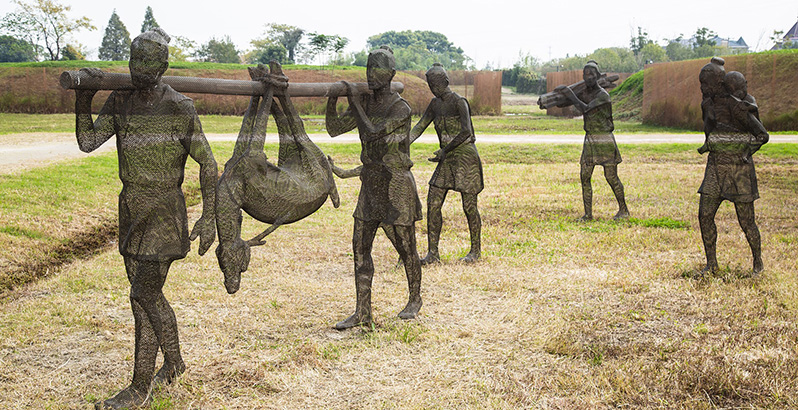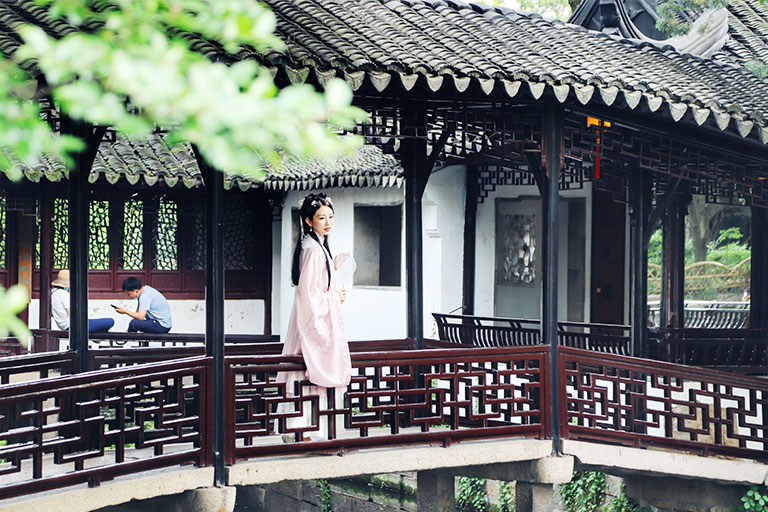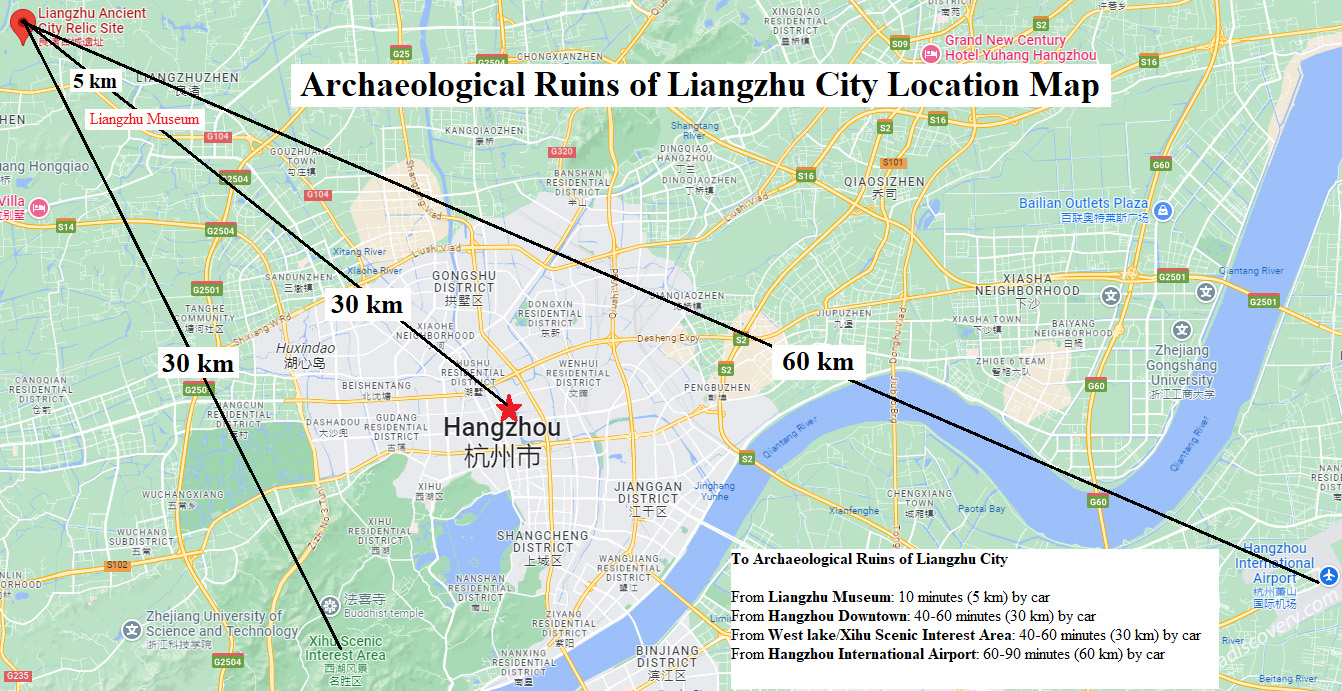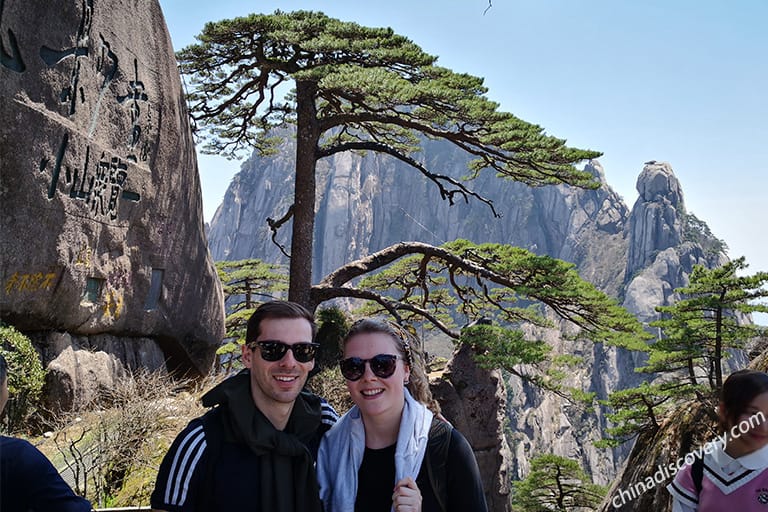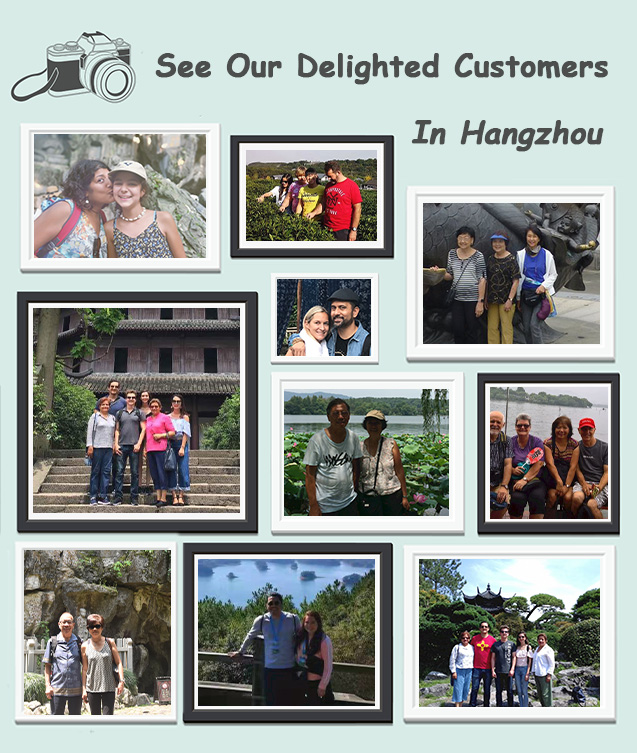The Discovery of Archaeological Ruins of Liangzhu City and Why It Is So Important
Located in the Yangtze River Basin on the south-eastern coast of the country, Archaeological Ruins of Liangzhu City was the center of power and belief of an early regional state in the Circum-Taihu Lake Area. It reveals an early regional state with rice-cultivating agriculture as its economic base, and social differentiation and a unified belief system, which existed in the Late Neolithic period in China.
This 5,300-year-old city was first discovered by Mr. Shi Xingeng in 1936, and then became known to the world after many years of archaeological excavations, and now is a key artifacts protection site in China. As a prehistoric large-scale settlement site in East Asia with significant representation in the history of the development of human civilization, Archaeological Ruins of Liangzhu City represents the highest achievement of rice agriculture in the origin stage of Chinese civilization, and as a representative of Liangzhu culture, it has a wide and far-reaching impact on the development of Chinese civilization in the next five thousand years.
The Peripheral Water Conservancy System with complex functions and socially graded cemeteries (including an altar), and the excavated objects represented by series of jade artifacts symbolizing the belief system illustrates the transition from small-scale Neolithic societies to a large integrated political unit with hierarchy, rituals and crafts, which authentically and credibly demonstrate the degree of development of the rice-cultivating civilization in the lower reaches of the Yangtze River in the Neolithic period and provide a panorama of Archaeological Ruins of Liangzhu City as an early regional urban civilization.
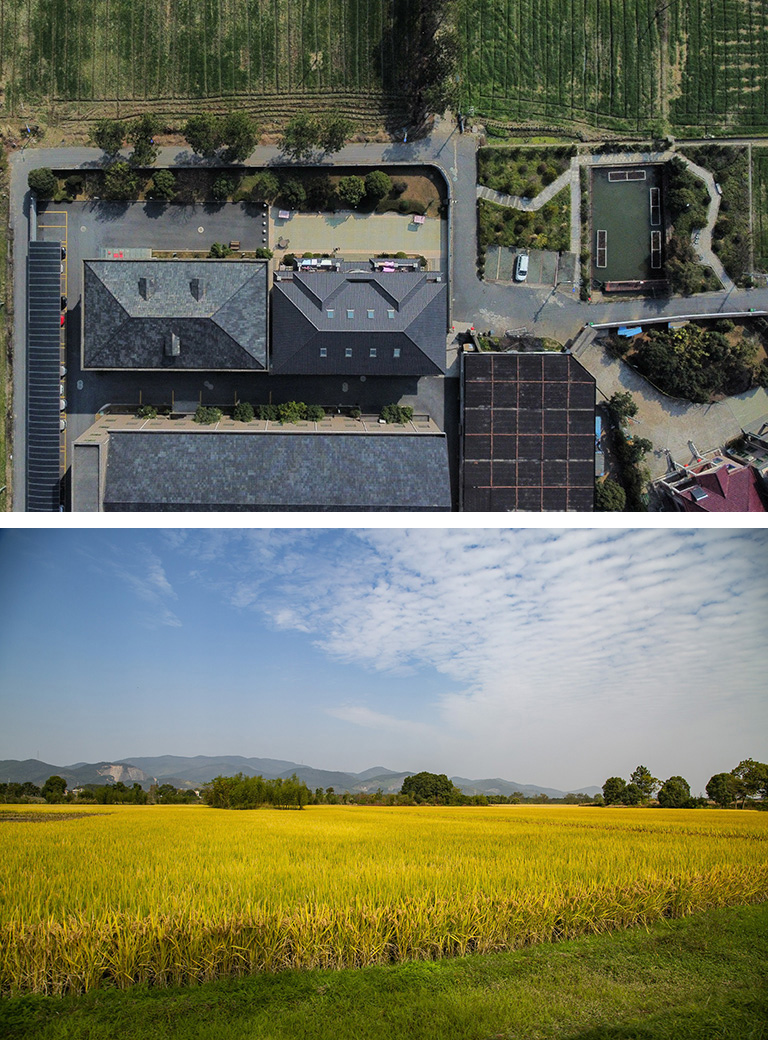 Archaeological Ruins of Liangzhu City
Archaeological Ruins of Liangzhu City
Jade Relics - the Highlight of Liangzhu Culture
As an important part of Chinese civilization, Liangzhu culture, especially the Jade Culture of Liangzhu, had a wide influence on the culture of the contemporaries and the later Longshan (龙山) period, and its distribution covered most of China.
Jade Cong (玉琮) is a masterpiece of Liangzhu jade culture. The carving skills and materials of Jade Cong fully reflect the wisdom of the Liangzhu people and have a profound impact on the development of Chinese jade culture in the future.
Jade Yue (玉钺) is a symbol of Liangzhu's military power. Jade Yue, together with Jade Cong and Jade Bi (玉璧), forms the core of the jade system, and is a symbol of status for the privileged class.
God with Animal's Face (神人兽面纹) is the main ornament on the jade of Liangzhu, which is widely engraved on various jade, and the complete image is composed of two parts, the facial features of the god and the animal, and the single image is only about 3 cm high and about 4 cm wide, which has high technical requirements
Attractions in Liangzhu Ancient City Site
Liangzhu Ancient City Site, which is more than 2.9 million square meters, is the core site of Archaeological Ruins of Liangzhu City with the most densely distributed, richest variety, highest grade, largest scale, and most complex structure in Liangzhu culture.
Mojiaoshan (莫角山) Palace
Mojiaoshan is a must-visit destination in Archaeological Ruins of Liangzhu City. As the central area of Liangzhu Ancient City Site, Mojiaoshan Terrace is the location of the palace area of Liangzhu Ancient City. Liangzhu Palace Area is located in the central high platform area, and the elaborate design highlights its unique status.
There are three separate earthen platforms built on the central high platform, namely Large-scale Mojiaoshan, Small-scale Mojiaoshan and Mount Turtle, and between the three earthen platforms, there is a 70,000-square-meter Sand Square.
Large-scale Mojiaoshan
Located in the core area of Liangzhu Ancient City Site, Large-scale Mojiaoshan is a palace area containing a ceremonial square and several large building foundations. It is the largest of the three earthen platforms in the Mojiaoshan Terrace, with the highest point reaching 16.5 meters, far exceeding the wall height of the city wall. Standing on the platform of Large-scale Mojiaoshan, the mountains around Liangzhu Ancient City Site are clearly visible.
Small-scale Mojiaoshan
Small-scale Mojiaoshan is the smallest earthen platform on the Mojiaoshan Terrace, about 90 meters long, 40 meters wide and 6 meters high, where a model of the building column is restored according to the arrangement of pillar holes.
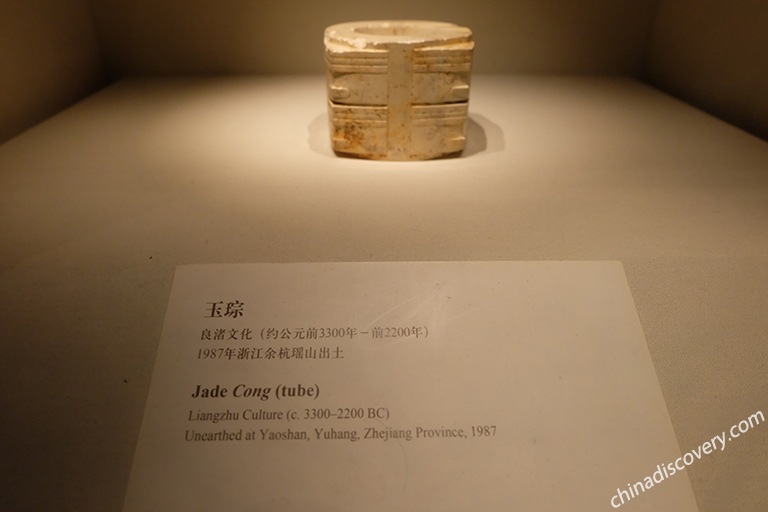 Jade Cong
Jade Cong
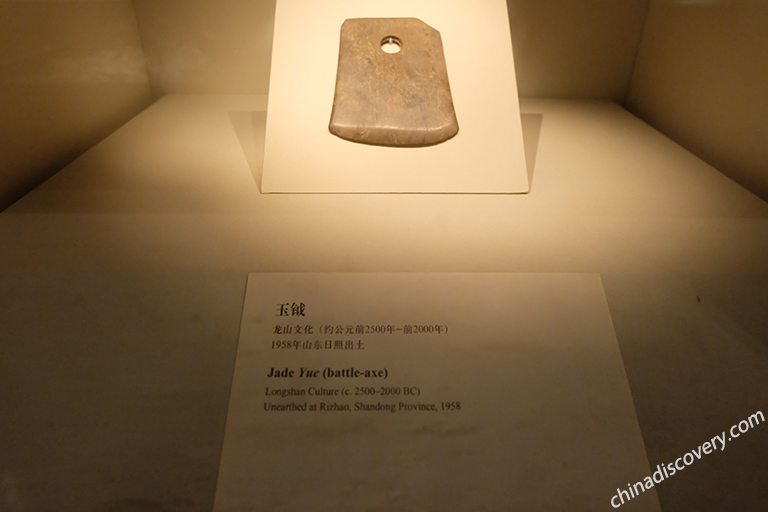 Jade Yue
Jade Yue
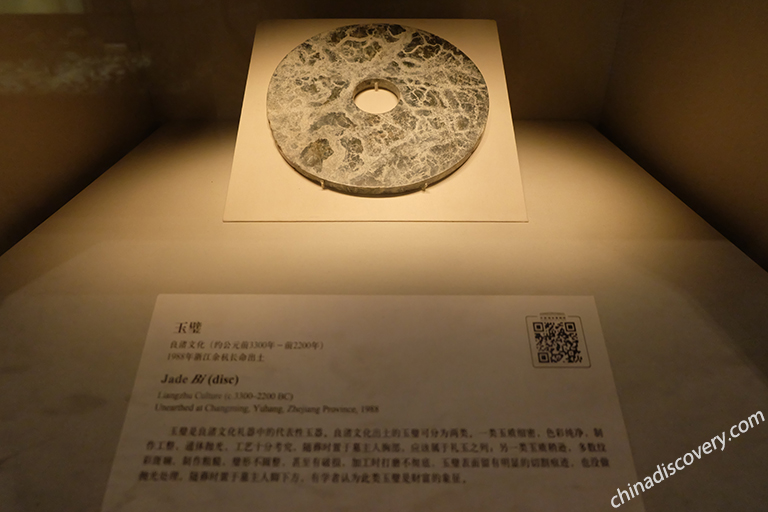 Jade Bi
Jade Bi
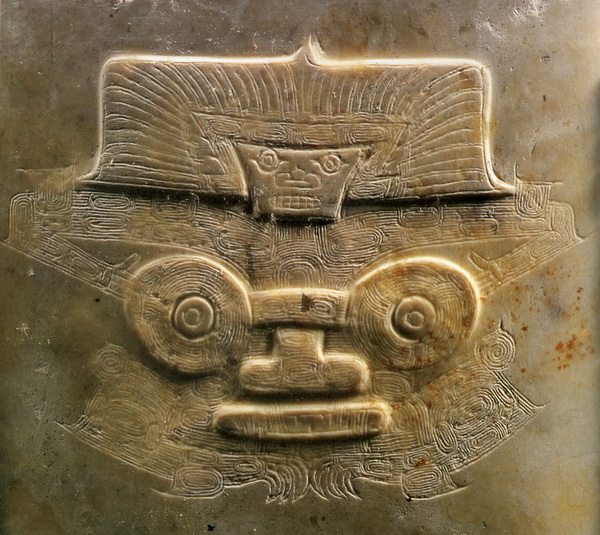 God with Animal's Face
God with Animal's Face©良渚遗址官网(www.lzsite.cn)
Fanshan (反山) Mausoleum
Fanshan is an artificially built rectangular earthen platform, about 6 meters high and covering an area of about 10,000 square meters. It is just separated from the Mojiaoshan Palace on the west side by only one river. Fanshan Mausoleum is the highest-level cemetery in Liangzhu Ancient City Site.
Tomb No. 12
So far, a total of 11 tombs have been excavated from the Fanshan Mausoleum, and more than 1,200 exquisite funerary objects such as jade, stone, pottery, ivory, lacquerware, etc. have been unearthed, of which more than 90% are precious jade. Tomb No. 12 in the center of the cemetery is the highest level tomb in Fanshan Mausoleum, with 658 funerary objects, including 647 pieces of jade, and the national treasures King Jade Cong and King Jade Yue symbolizing the supreme theocracy and kingship were unearthed here, proving the honored status and supreme power of the tomb owner.
The Fanshan Exhibition Hall
The Fanshan Exhibition Hall in Liangzhu Ancient City Site displays various excavated artifacts, which can provide a deeper view of the excavation process of the site. As a civilization linked by theocracy, the Liangzhu Civilization is more similar to the Egyptian Civilization. The Fanshan Exhibition Hall has opened a special area to introduce God with Animal's Face, which is used as a symbol of power and faith, reflecting the supremacy of theocracy and the close combination of theocracy and kingship in the Liangzhu period.
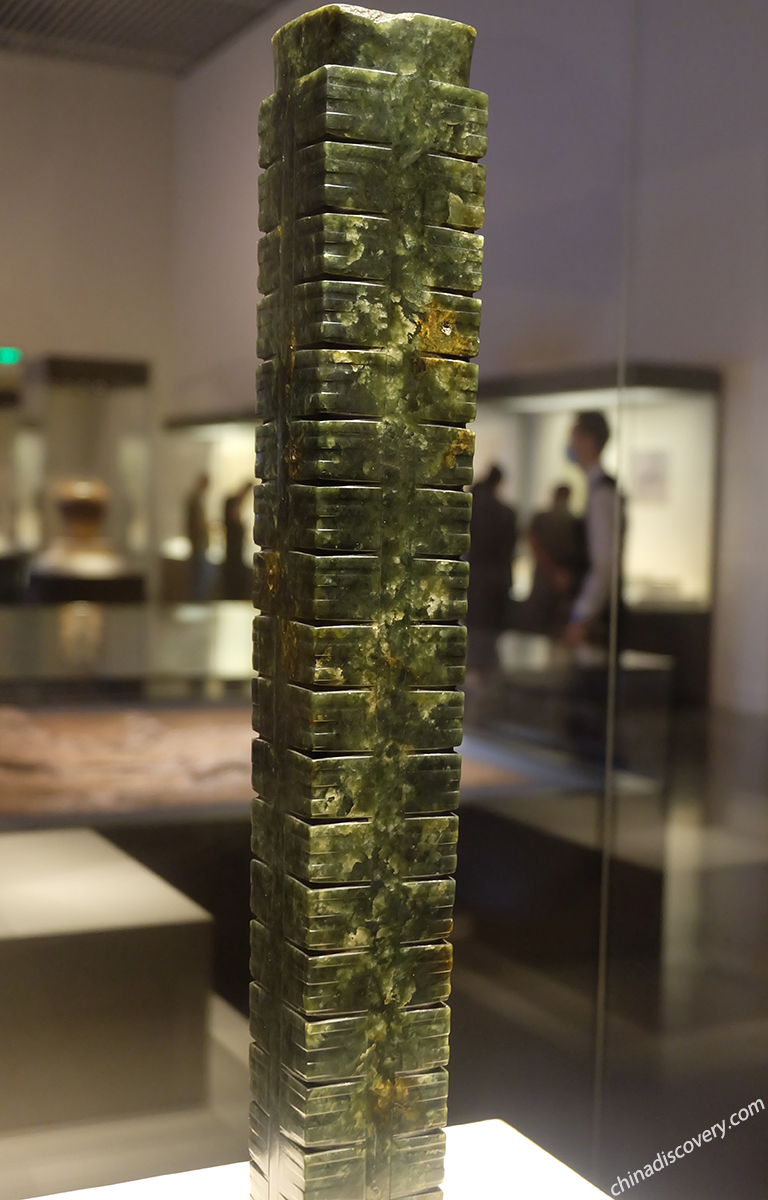 King Jade Cong
King Jade Cong
Zhongjiagang (钟家港)
Zhongjiagang is the handicraft workshop exhibition area, through which imitation metal figure sculptures show the process of handicraft and labor of Liangzhu people up close, reproducing the busy scene of the handicraft workshop area of Liangzhu Ancient City 5,300 years ago.
Handicraft Workshop
The large-scale handicraft workshop remains show that there are complex functional divisions and specialized social division of labor in Liangzhu Ancient City, of which jade processing accounts for a large proportion, reflecting the organization and management ability of Liangzhu society for high-end handicrafts such as jade making.
City Wall and City Gate
Built on the swampy wetland, Liangzhu Ancient City is like the "Venice of the East", with a dense river network and a developed water system, and canoes and bamboo rafts are the main means of transportation for Liangzhu people. A total of eight Water Gate and one Land Gate were found in Liangzhu Ancient City Site, and the inner and outer cities of Liangzhu were connected by eight Water Gate, and each wall had two water gates.
Zhishan (雉山) Observation Deck
Located in the northeast corner of Liangzhu Ancient City Site, Zhishan, at an altitude of 30 meters, is an important part of the city wall, connecting the East City Wall with the North City Wall. Climb to the Zhishan Observation Deck, and you can overlook the entire Liangzhu Ancient City Site, and the beautiful scenery of the surrounding mountains can be seen unobstructed.
Located in the southwest corner of the city wall, Fengshan (凤山) is another mountain corresponding to Zhishan, and together with Zhishan, it forms the two highlands of Liangzhu Ancient City Site. Fengshan has tea gardens and rice fields, and experiential activities such as tea picking and rice cutting are held at certain times.
Daguanshan (大观山) Service Area
Daguanshan, a comprehensive service area, located in the center of Liangzhu Ancient City Site, with an excellent ecological environment, beautiful scenery and pleasant climate, is a perfect summer resort, and at the same time provides tourists with rest, consultation, complaints, catering, tea tasting and other services. There is a Deer Park next to Daguanshan, where you can see sika deer.
Recommended Route to Visit Liangzhu Ancient City Site
Sightseeing Buses Route
East Gate→ East City Wall→ Zhishan Observation Deck→ Mojiaoshan Palace→ Fanshan Mausoleum→ West City Wall → West Gate
Deer Park Sightseeing Route
East Gate→ Zhongjiagang→ Daguanshan Service Area→ Deer Park→ Chizhong Temple (池中寺) Granary→ West Gate
Cycling Sightseeing Route
East Gate→ East City Wall→ Zhishan Observation Deck→ Fanshan Mausoleum→ Chizhong Temple Granary→ Land Gate→ Zhongjiagang
Tips: Archaeological Ruins of Liangzhu City covers an area of about 3 million square meters, and you need to spend about half a day experiencing the 5,300-year-old civilization. If you want to learn more about Liangzhu's culture and history, you can also visit the nearby Liangzhu Museum, which is only 5 kilometers from Archaeological Ruins of Liangzhu City.
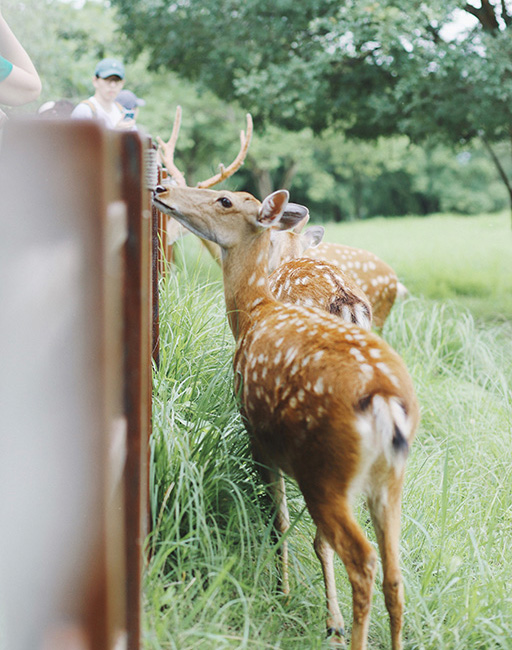 Deer Park in Liangzhu Ancient City Site
Deer Park in Liangzhu Ancient City Site
How to Get to Archaeological Ruins of Liangzhu City
Location and Transportation
Archaeological Ruins of Liangzhu City is located 200 meters north of the intersection of Fengdu Road and National Highway 104, Yuhang District, Hangzhou, Zhejiang Province. (浙江省杭州市余杭区凤都路与104国道交叉口北200米)
Archaeological Ruins of Liangzhu City is located in the northwest of Hangzhou, only 30 kilometers from downtown Hangzhou (about 40-60 minutes by car) and about 60 kilometers away from Hangzhou Xiaoshan (萧山) Airport (about 60-90 minutes by car). Visitors can also choose to take a taxi, private vehicle, or city bus to arrive at Archaeological Ruins of Liangzhu City.
Travel with China Discovery
If you want to get rid of hustle of public transportation and troublesome navigation, it's highly suggested to travel with us China Discovery. As part of our comprehensive tour packages, we offer convenient pick-up & drop-off at airports and train stations, as well as seamless transportation between all scenic spots on your itinerary. Once you book our service, you'll bid farewell to travel-related worries, with a knowledgeable tour guide, satisfactory accommodation and dining and so on. You just need to focus on sightseeing. So, don't hesitate to contact us and let us take care of all your travel needs in China.
 Our Local Private Transfer Service
Our Local Private Transfer Service
Archaeological Ruins of Liangzhu City Travel Tips
1. Tickets: CNY 60/pp for entrance; CNY 20/pp for a one-round sightseeing bus ride; CNY 800/2 hours for charter service
2. Opening Hours: 9:00-17:00 (admission is closed after 16:00).
3. Guide Service: Paid English guides and rental voice guide devices are available.
4. Weather Tips: There is less shade on the roads in Archaeological Ruins of Liangzhu City, and sun protection measures need to be taken in hot weather, such as an umbrella, sunglasses, a hat, water, etc. Know more about Hangzhou's weather.
How to Plan a Hangzhou Tour
Things to Do in Hangzhou: West Lake, Lingyin Temple, Longjing tea Plantation, Hefang Street, Xixi National Wetland Park, China National Tea Museum, China National Silk Museum…
How to Get to Hangzhou: International flights from Singapore (5 hrs.), Seoul (6.5 hrs.), etc., domestic flights from Guangzhou (2 hrs.), Beijing (2 hrs.), etc., or high speed trains from Shanghai (1~2 hrs.), Suzhou (1.5~3 hrs.), Huangshan (1.5~2 hrs.), etc.
Best Time to Visit Hangzhou: all year around
Usually, visitors spend 2 days around to enjoy a classic Hangzhou tour to visit the West Lake Scenic Area, including the amazing West Lake, Lingyin Temple, Longjing Tea Plantations, etc. If you want an in-depth Hangzhou tour, you can also pay another half day or so to visit Xixi National Wetland Park, one day around to Beijing-Hangzhou Grand Canal, or one day or so to Thousand Islands Lake, etc. Check all Hangzhou Tours >>
☛ 2 Days Essence of Hangzhou Tour
☛ 3 Days Classic Hangzhou Tour Plus Tea Plantation Exploration
Also, you can spend 1 day to take a side trip to the nearby water towns like Wuzhen and Xitang in Jiaxing, 2~3 days to Putuoshan - one of the four sacred Buddhist Mountains in China, or 1 day to the popular Nanxun Old Town in Huzhou. Check more about Zhejiang Tours >>
☛ 3 Days Best Hangzhou Tour with Wuzhen Water Town
Besides, compared with just travelling Hangzhou, most of the visitors prefer to travel the metropolis Shanghai, Suzhou Gardens and Hangzhou Lakes in One Go! Such an amazing tour will take 5~6 days.
☛ 5 Days Shanghai Hangzhou Suzhou Highlights Tour
☛ 3 Days Hangzhou & Suzhou Beauty Tour by High Speed Train
☛ 4 Days Heavenly Hangzhou Suzhou Tour with Zhouzhuang Water Town
Some visitors also ride a high speed train to Huangshan to visit the world-famous Yellow Mountain. A Hangzhou Huangshan tour needs about 5 days around.
☛ 5 Days Yellow Mountain Tour from Hangzhou
Have your preferences? Please feel free to tell us your likes and let our professional travel consultants customize a personal tour for you!
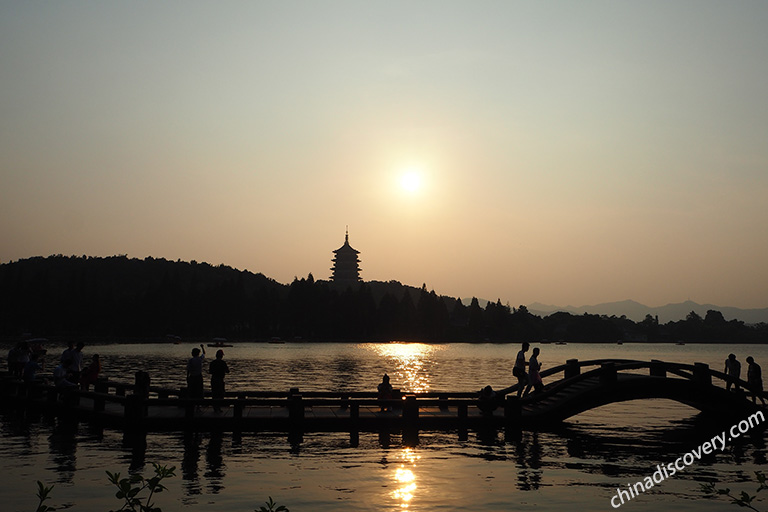 Hangzhou West Lake Summer Sightseeing
Hangzhou West Lake Summer Sightseeing
 Our Customers visited Meijia Dock Longjing Tea Plantation, Hangzhou
Our Customers visited Meijia Dock Longjing Tea Plantation, Hangzhou
Get Inspired by Real Travel Stories of Our Customers
Since 2012, we China Discovery have helped numerous customers to visit Hangzhou and surroundings. With our fully-inclusive private tour packages, all of our customers enjoyed their trips to the West Lake, Lingyin Temple, etc. Some of them kindly shared their precious photos and stories about their Hangzhou journey, just get inspired now.
"Impression Show is a must see when visiting Hangzhou…" - shared by Nguyen (Read her entire travel story: The Pursuit of Natural Beauty with the Beloved one - 14 Days Beautiful China Exploring Tour)
"This last night in Hangzhou led us to explore a different side of West Lake, vastly changing our erstwhile bland impression of the famed tourist site…" - shared by CS from Singapore (Read her entire travel story: Delightful Journey to Poetic Jiangnan Area)
Besides the wonderful travel stories, many customers who visited Hangzhou with China Discovery also send us their first-hand feedbacks about their trip, feel free to read the Hangzhou Reviews and learn what they say about their experience. If you want to start your Hangzhou tour now, don't hesitate to contact us.
- Essence Hangzhou Tour
- 3 Days Hangzhou Wuzhen
- 3 Days Hangzhou Suzhou
- Shanghai Hangzhou Tour
Hangzhou Tours
- Impression West Lake
- Hangzhou Broken Bridge
- Lingyin Temple
- Longjing Tea Plantations
- Hefang Street
- Hu Qing Yu Tang
- China National Tea Museum
- China National Silk Museum
- Xixi National Wetland Park
- Liuhe Pagoda
- Qiantang River Tidal Bore
- Wuzhen Water Town
- Xitang Water Town
- Qiandao Lake
Hangzhou Attractions
- Things to Do
- Attractions
- Get There & Around
- Get to West Lake
- Airport to City
- Hangzhou to Wuzhen
- Xiaoshan Airport
- Hangzhou Train Stations
- Hangzhou High Speed Train
- Hangzhou Metro
- Hangzhou Bus
- West Lake Boat
- Where to Stay
- Hangzhou Hotels
- Hangzhou Weather
- Hangzhou Maps
- Hangzhou Museums
- Hangzhou Nightlife
- Hangzhou Food
- Hangzhou Biking
- 144-Hour Visa-Free Transit
- Hangzhou Travel FAQs & Tips
- How to Plan Hangzhou Tour
- More Hangzhou Travel Guide
Hangzhou Travel Guide
More about Zhejiang Travel Guide
Recommended Hangzhou Tours
Top 3 Hangzhou tours chosen by most customers to explore Hangzhou in the best way. Check the detailed itinerary, or tailor your own trip now with us.

12 Days Classical China Vacation
Beijing / Xian / Guilin / Hangzhou / Shanghai

6 Days Shanghai Hangzhou Suzhou Bullet Train Tour with Wuzhen Water Town
Shanghai / Hangzhou / Wuzhen / Suzhou / Shanghai

8 Days Treasures of Jiangnan China Odyssey Tour
Shanghai / Wuzhen / Hangzhou / Huangshan / Jingdezhen / Wangxian Valley
Start planning your tailor-made holiday to China by contacting one of our specialists. Once inquired, you’ll get a response within 0.5~23.5 hours.
Customize a TripHave a question? Get answers from our travel experts or guests
- Your Question:
- Your Name:
- Your Email:
- Submit

























